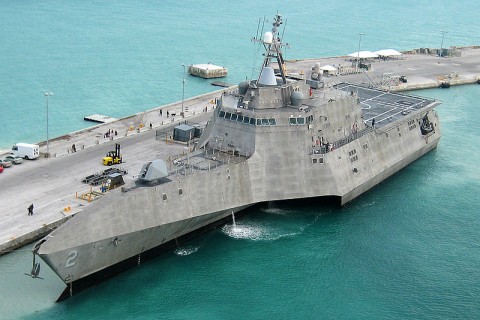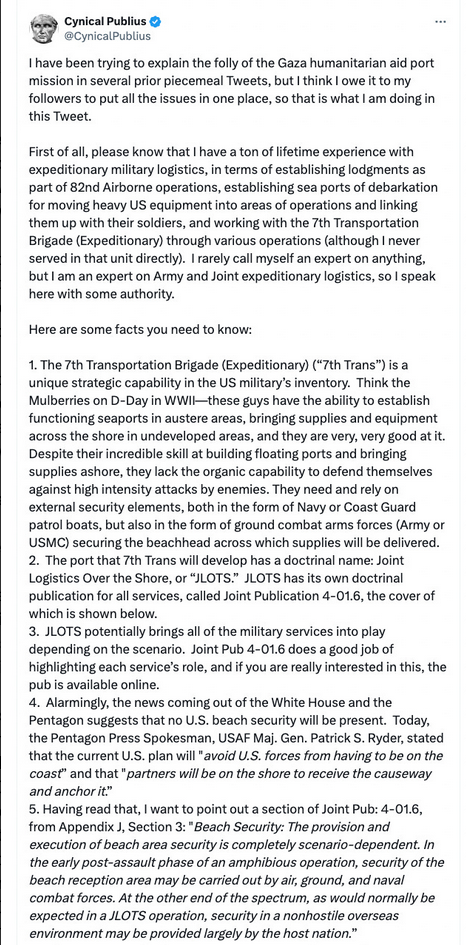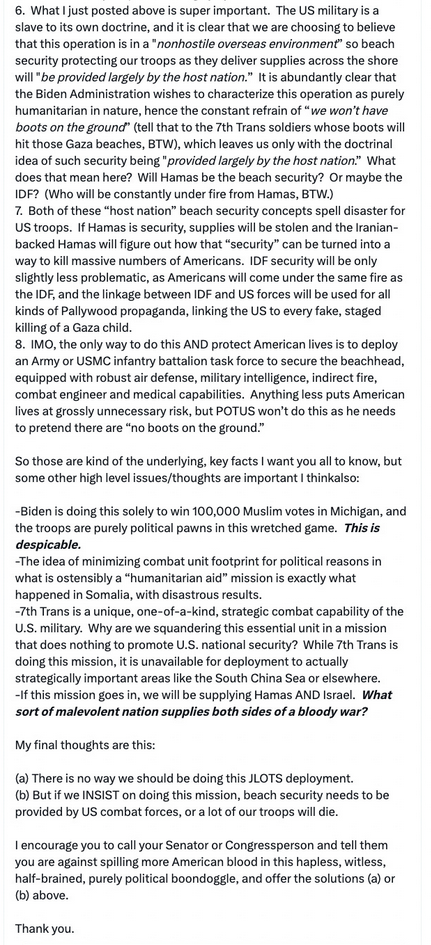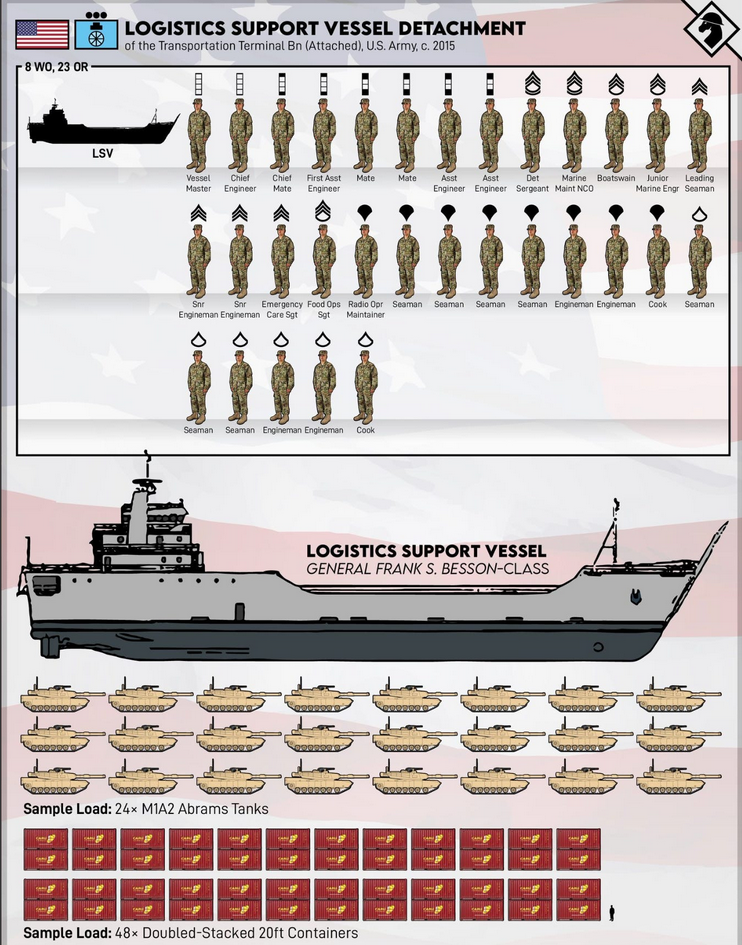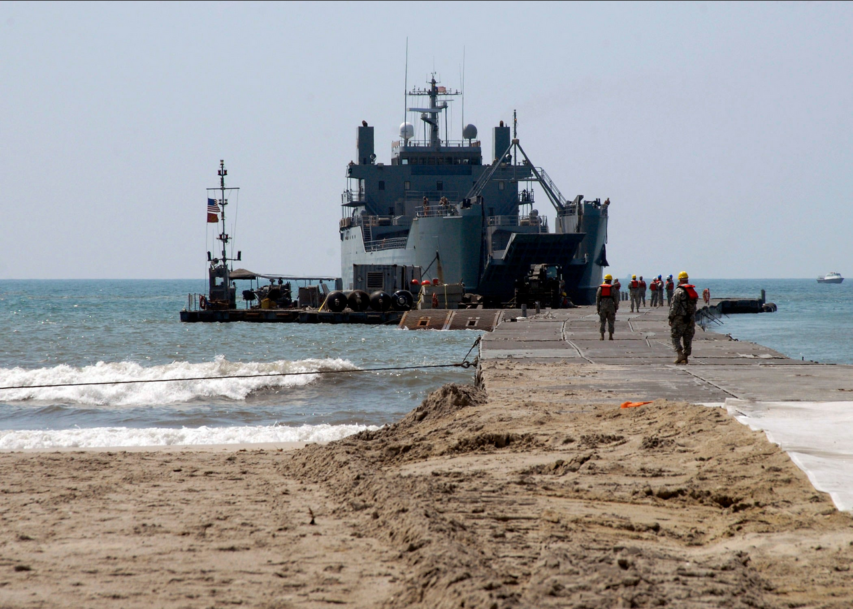toldinstone
Published Jan 12, 2024Chapters:
0:00 Introduction
0:34 Progress of a siege
1:55 Looting and violence
3:42 Recorded atrocities
4:45 Captives
5:27 BetterHelp
6:36 Surviving a Roman sack
7:13 Where to hide
8:27 What to do if you’re captured
9:20 Advice for women
10:09 The fate of captives
(more…)
April 18, 2024
What to do if Romans Sack your City
April 15, 2024
QotD: Cereal cultivation also helped grow the centralized state
Sumer just before the dawn of civilization was in many ways an idyllic place. Forget your vision of stark Middle Eastern deserts; in the Paleolithic the area where the first cities would one day arise was a great swamp. Foragers roamed the landscape, eating everything from fishes to gazelles to shellfish to wild plants. There was more than enough for everyone; “as Jack Harlan famously showed, one could gather enough [wild] grain with a flint sickle in three weeks to feed a family for a year”. Foragers alternated short periods of frenetic activity (eg catching as many gazelles as possible during their weeklong migration through the area) with longer periods of rest and recreation.
Intensive cereal cultivation is miserable work requiring constant toil with little guarantee of a good harvest. Why would anyone leave this wilderness Eden for a 100% wheat diet?
Not because they were tired of wandering around; Scott presents evidence that permanent settlements began as early as 6000 BC, long before Uruk, the first true city-state, began in 3300. Sometimes these towns subsisted off of particularly rich local wildlife; other times they practiced some transitional form of agriculture, which also antedated states by millennia. Settled peoples would eat whatever plants they liked, then scatter the seeds in particularly promising-looking soil close to camp – reaping the benefits of agriculture without the back-breaking work.
And not because they needed to store food. Hunter-gatherers could store food just fine, from salting animal meat to burying fish and letting it ferment to just having grain in siloes like everyone else. There is ample archaeological evidence of all of these techniques. Also, when you are surrounded by so much bounty, storing things takes on secondary importance.
And not because the new lifestyle made this happy life even happier. While hunter-gatherers enjoyed a stable and varied diet, agriculturalists subsisted almost entirely on grain; their bones display signs of significant nutritional deficiency. While hunter-gatherers were well-fed, agriculturalists were famished; their skeletons were several inches shorter than contemporaneous foragers. While hunter-gatherers worked ten to twenty hour weeks, agriculturalists lived lives of backbreaking labor. While hunter-gatherers who survived childhood usually lived to old age, agriculturalists suffered from disease, warfare, and conscription into dangerous forced labor.
Scott Alexander, “Book Review: Against The Grain“, Slate Star Codex, 2019-10-15.
March 30, 2024
QotD: Multiculturalism, in theory and practice
The creed of contemporary multiculturalism sought to establish that all societies were roughly equal and that the “other” was but a crude Western fiction. But we were reminded that people like the Taliban who did not vote, treated women as chattel, and whipped and stoned to death dissenters of their primordial world were different folk from citizens of democracy. A chief corollary to such cultural relativism was that Americans have wrongly embraced a belief in the innate humanity of the West largely out of ethnocentric ignorance. But surely the opposite has been proven true: the more Americans after September 11 learned about the world of the madrassas, the six or seven varieties of Islamic female coverings, the Dickensian Pakistani street, and the murderous gangs in Somalia, Sudan, and Afghanistan, then the more not less, they are appalled by societies that are so anti-Western.
Victor Davis Hanson, Ripples of Battle, 2003.
March 28, 2024
Justin Trudeau never misses an opportunity to make a performative announcement, even if it harms Canadian interests
Canadian Prime Minister Justin Trudeau made an announcement last week that the Canadian government was cutting off military exports to Israel … except that Canada buys more military equipment from Israel than vice-versa:
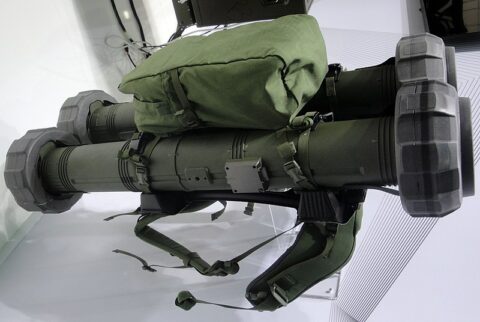
Israeli Spike LR2 antitank missile launchers, similar to the ones delivered to the Canadian Army detachment in Latvia in February.
Wikimedia Commons.
When the Trudeau government publicly cut off military exports to Israel last week, the immediate reaction of the Israeli media was to point out that Canada’s military was far more dependent on Israeli tech than was ever the case in reverse.
“For some reason, (Foreign Minister Melanie Joly) forgot that in the last decade, the Canadian Defense Ministry purchased Israeli weapon systems worth more than a billion dollars,” read an analysis by the Jerusalem Post, which noted that Israeli military technology is “protecting Canadian pilots, fighters, and naval combatants around the world.”
According to Canada’s own records, meanwhile, the Israel Defense Forces were only ever purchasing a fraction of that amount from Canadian military manufacturers.
In 2022 — the last year for which data is publicly available — Canada exported $21,329,783.93 in “military goods” to Israel.
This didn’t even place Israel among the top 10 buyers of Canadian military goods for that year. Saudi Arabia, notably, ranked as 2022’s biggest non-U.S. buyer of Canadian military goods at $1.15 billion — more than 50 times the Israeli figure.
What’s more — despite Joly adopting activist claims that Canada was selling “arms” to Israel — the Canadian exports were almost entirely non-lethal.
“Global Affairs Canada can confirm that Canada has not received any requests, and therefore not issued any permits, for full weapon systems for major conventional arms or light weapons to Israel for over 30 years,” Global Affairs said in a February statement to the Qatari-owned news outlet Al Jazeera.
The department added, “the permits which have been granted since October 7, 2023, are for the export of non-lethal equipment.”
Even Project Ploughshares — an Ontario non-profit that has been among the loudest advocates for Canada to shut off Israeli exports — acknowledged in a December report that recent Canadian exports mostly consisted of parts for the F-35 fighter jet.
“According to industry representatives and Canadian officials, all F-35s produced include Canadian-made parts and components,” wrote the group.
The History of Fish Sauce – Garum and Beyond!
Tasting History with Max Miller
Published Dec 26, 2023Sweet frittata-like patina of pears with classic ancient Roman flavors and sprinkled with long pepper
City/Region: Rome
Time Period: 1st CenturyThis patina de piris is one of over a dozen recipes for similar dishes in Apicius’ De re coquinaria, a staple for ancient Roman recipes. It would have probably been part of mensa secunda, or second meal. Not a second breakfast, it was the final course in a larger meal and usually consisted of sweets, pastries, nuts, and egg dishes, kind of like a modern dessert course.
I finally made my own true ancient Roman garum in the summer of 2023, from chopped up fish pieces and salt to clear amber umami-laden liquid. There’s no fishiness in this surprisingly sweet dish, just a saltiness and savory umami notes that complements the other very ancient Roman flavors.
As with all ancient recipes, this is my interpretation and you can change things up how you like. I separated my eggs before beating them, but you could just whisk them up whole and add them like that.
(more…)
March 26, 2024
Why the USN isn’t using their “Littoral Combat Ships” in the Red Sea littoral zone
CDR Salamander explains why the US Navy has chosen not to deploy the ships specifically designed and built to operate in environments like the Red Sea:
On yesterday’s Midrats, my co-host mentioned that recently in the Red Sea our Navy has seen the most littoral combat it has in a very long time, but our Littoral Combat Ships are not to be seen. Why? Simple. They cannot conduct combat on the littorals.
This AM, fellow “First LCS Critic” Chapomatic sent me a link to an article from September of last year that I think at the time I made a passing comment on over at X, but did not bring here. Well, let’s fix that.
Why do we need to periodically drag LCS out of the gimp box and hoist her up for all to behold? Simple; as an example to others. We simply cannot afford another CG(X) or DDG-1000 situation with DDG(X) or any other ship we have in the design phase. We have already lost one generation of ship design due to the Age of Transformationalism.
With the Constellation Class FFG we now have building, we are at last taking the course I first suggested in 2006 to correct the error of LCS. That is our version of FREMM that was first commissioned by the French in 2012, a dozen years ago.
LCS was not a problem with our shipbuilding industry or even our design people – though there are areas to critique there. No, this was a people problem, a mindset problem, a culture problem.
It needs to be dragged up regularly. I last did a dedicated post on it back in August 2023. It is time.
As we dive into the details remember this; since the disaster of LCS no senior personnel have yet been held to public account. We have the same acquisition system. We have the same incentives and disincentives as before. Critics of LCS were pushed over to the off-ramp; its most NORK-like advocates promoted.
There is no guarantee this won’t happen again.
Joaquin Sapien at ProPublica and his extensive almost novella – not just an article – on LCS that even opens with a quote of the phrase that first came into the general conversation here on CDR Salamander; The Inside Story of How the Navy Spent Billions on the “Little Crappy Ship”.
Sadly, we did not even get a mention or link – though most of the arguments are the same ones we’ve been making here and on the OB Blog since 2004 – if you spot me six months or so, two decades ago.
Some people have critiques of ProPublica, especially from the right side of the spectrum, but I’m sorry – their critique here is spot on.
It starts right in center mass;
The USS Freedom had its own special place within the armada. It was one of a new class of vessels known as littoral combat ships. The U.S. Navy had billed them as technical marvels — small, fast and light, able to combat enemies at sea, hunt mines and sink submarines.
In reality, the LCS was well on the way to becoming one of the worst boondoggles in the military’s long history of buying overpriced and underperforming weapons systems. Two of the $500 million ships had suffered embarrassing breakdowns in previous months. The Freedom’s performance during the exercise, showing off its ability to destroy underwater mines, was meant to rejuvenate the ships’ record on the world stage. The ship was historically important too; it was the first LCS built, the first in the water, commissioned just eight years prior.
The summary of their findings in spot on, especially the last sentence;
Our examination revealed new details on why the LCS never delivered on its promises. Top Navy leaders repeatedly dismissed or ignored warnings about the ships’ flaws. One Navy secretary and his allies in Congress fought to build more of the ships even as they broke down at sea and their weapons systems failed. Staunch advocates in the Navy circumvented checks meant to ensure that ships that cost billions can do what they are supposed to do.
Both inside and outside the Navy, LCS critics warned two decades ago that 2024 would find the Little Crappy Ship roughly where it wound up
Montreal’s La Presse issues apology for antisemitic editorial cartoon
Caroline Glick discusses the blood libel cartoon published by Montreal’s La Presse on 20 March, 2024:
According to Canada’s La Presse, Israeli Prime Minister Benjamin Netanyahu is a vampire, and he is poised to suck the life out of the Palestinians in Rafah, Hamas’s final outpost in southern Gaza. The publication that was once a paper of record in Canada ran a political cartoon on March 20 portraying Netanyahu as a vampire, with a huge hooked nose, pointy ears and claws for fingers, dressed in Dracula’s overcoat while standing on the deck of a pirate ship.
The caption, written in blood-dripping red letters, read: “Nosfenyahou: En Route Vers Rafah.” Nosferatu, the Romanian word for vampire, was the title of a proto-Nazi German silent horror film from 1922 chock-full of anti-Semitic poison. The film, which became something of a cult flick, featured a vampire with a long Jewish nose. He arrived at an idyllic German town with a box full of plague-carrying rats that he released on the innocent villagers as he plotted to suck his realtor’s blood.
La Presse‘s cartoon didn’t leave any room for imagination. It wasn’t making a political or military argument against Israel’s planned ground operation in Rafah. Its goal wasn’t to persuade anyone of anything.
The Netanyahu-the-vampire cartoon asserted simply that Netanyahu is a Jewish bloodsucker and, more broadly, the Jewish state — and Jews worldwide — must be vigorously opposed by all right-thinking people who don’t want Jewish vampires to kill them.
As the paper no doubt anticipated, the cartoon provoked an outcry from Canadian Jews and some politicians. And after a few hours, the newspaper took it off its website and apologized. Anyone who thinks that means that the good guys won misses the point of the move. The Jewish outcry and pile-on by politicians and media coverage proved the point. Jews are evil and control everything, even what a private paper can publish. Like Nosferatu in its day, the cartoon will become a piece of folklore, additional proof that the Jews are the enemy of humanity.
In other words, the cartoon was a blood libel.
We’re seeing lots and lots of it these days. And so, it is worth recalling what a blood libel is.
In its original form, of course, the libel was specifically about blood. About 1,000 years ago, Christians in England began accusing Jews of performing ritual murders of Christian children to use their blood to bake Passover matzahs.
The accusation was inherently insane. Jewish law prohibits murder. It prohibits cannibalism. It prohibits child sacrifice. It prohibits eating food with blood. But none of that mattered. Like the cartoon in La Presse, the blood libel didn’t seek to persuade anyone. It presumed that its target audiences already hated Jews or had a latent tendency to hate Jews, which the blood libel aimed to unleash. The purpose of the blood libel was to scapegoat the Jews and to incite target audiences from London to Damascus to act on that hatred. Over the millennium, hundreds of thousands of Jews were massacred in Europe and the Islamic world in response to blood libels.
March 23, 2024
The Roman Army’s Biggest Building Projects
toldinstone
Published Dec 15, 2023The greatest achievements of the Roman military engineers.
Chapters:
0:00 Introduction
0:38 Marching camps
1:36 Bridges
2:40 Siegeworks
3:26 PIA VPN
4:32 Permanent forts
5:49 Roads
6:24 Frontier defenses
7:41 Canals
8:21 Civilian projects
8:54 The aqueduct of Saldae
(more…)
March 19, 2024
QotD: “Not In Our Name”
Meanwhile, the Worldwide Sisterhood Against Terrorism And War, which includes Susan Sarandon, Gloria Steinem, Alice Walker and about 75 other sisters and is “Worldwide” mainly in the sense the World Series is, organized a petition called “Not In Our Name”. “We will not support the bombing,” they declared, and who can blame them? I dropped out of women’s studies in Grade Two, but, as I recall, a bombing campaign is a quintessential act of patriarchal oppression and sexual domination. The male pilot, looming over the curvy undulating form of the Third World hillside, unzips his bomb carriage and unleashes his phallic ordinance to penetrate his target. Needless to say, he explodes on contact, typical bloody men.
Mark Steyn, “Omar’s Girls”, National Post, 2001-11-29.
March 13, 2024
“They won’t be in Gaza, but they’ll be just offshore — a few hundred yards from Gaza”
Apparently a bunch of former military types are getting their collective panties in a bunch just because Biden is sending part of a highly specialized US Army support brigade to install a temporary offshore unloading facility to get “humanitarian aid” in to Hamas fighters the civilian population of Gaza. All the political advisors to the President want to assure everyone that there will be no “boots on the ground”, so there’s no real risk …
The Pentagon has said something that should make us all sit up and pay attention.
Quick background first:
Elements of the US Army’s 7th Transportation Brigade are on the way to Gaza. […] They won’t be in Gaza, but they’ll be just offshore — a few hundred yards from Gaza. Now read this, and take the time to read it closely. I’ll split it into two screencaps to get it all in, which will be awkward to look at, but you can just click on the link to see it all whole (and subscribe to keep up with “Cynical Publius” as all of this develops):
The extremely important part of all of that is that transportation troops aren’t combat arms troops; they’re armed for some degree of self-protection, but “they lack the organic ability to defend themselves against high-intensity attacks by enemies.” In a hostile environment, they need to be screened: they need to be protected by combat-focused forces, both on-shore and off. They need infantry in front of them, warships behind them, and aircraft overhead.
Now, via this account, look at this transcript of an … interesting Pentagon press briefing on March 8, in which a major general talks at length about the security plan for the 7th Transportation Brigade when it gets to Gaza. Sample exchange:
Q: (Inaudible) partner nations on the ground, but you’re talking about operational security, you can’t discuss what will be (inaudible).
GEN. RYDER: Right. I mean, we will — these forces will have the capability to provide some organic security. I’m just not going to get into the specifics of that.
But they don’t — or they do, but the capability of transportation troops, from a combat service support branch, is extremely limited. Again, these are not combat arms troops, and aren’t armed or trained as combat arms troops. Talking about their organic security capability is an interesting choice.
March 12, 2024
A JLOTS for Gaza?
The Biden administration has made a decision to create a temporary shore unloading facility to provide Gaza with “humanitarian aid”. The particular installation is called an Army Joint Logistics Over-the-Shore (JLOTS) and will be delivered by a US Army logistics ship, USAV General Frank S. Besson (LSV-1) which was reported as departing a base in Virginia and will arrive as soon as its 12-knot top speed will allow. CDR Salamander has the details:
… and yes my friends — the Army has its own navy. Let’s take a quick look at the Besson.
Yep’r, that 243 foot, 4,200 ton ship is commanded by … a Warrant Officer. Discuss amongst yourselves.
If you’re wondering what she looks like putting a JLOTS in place;
This will take about 1,000 personnel to accomplish. I don’t know a single maritime professional who thinks this is a good idea given the location and conditions ashore, but orders are orders. Make the best attempt you can.
An interesting note; this is not a Navy operation, but an Army operation. Remember what I told you about the fate of the East Coast Amphibious Construction Battalion TWO (ACB2) last summer? This story aligns well with the Anglosphere’s problem with seablindness we discussed on yesterday’s Midrats with James Smith.
As for my general thought on doing this? I’ll avoid the politics as much as I can, but I have concerns.
Generally speaking, no operation starts out on the right foot with a lie.
“We’re not planning for this to be an operation that would require U.S. boots on the ground,” said a senior administration official.
I’m not mad at the official. They are just making sure their statement is in line with higher direction and guidance. President Biden was clear in his SOTU speech;
The United States has been leading international efforts to get more humanitarian assistance into Gaza. Tonight, I’m directing the U.S. military to lead an emergency mission to establish a temporary pier in the Mediterranean on the coast of Gaza that can receive large shipments carrying food, water, medicine, and temporary shelters.
No U.S. boots will be on the ground.
You cannot build a pier, even JLOTS, without putting boots on the ground. Just look at the above picture again.
March 9, 2024
The Jewish Avengers Who Hunted Nazi Murderers
World War Two
Published Mar 8, 2024In March 1945, the first Jewish unit in the Allied forces reaches the frontline. Before fighting the Nazis, the men spent years battling against the policies of the British government. After the war, they will take vengeance on the perpetrators of the Holocaust and join the Zionist movement in building and fighting for Israel.
(more…)
March 6, 2024
QotD: Mansa Musa’s disastrous foreign aid to Cairo
Mansa Musa’s good intentions may be the first case in history of failed foreign aid. Known as the “Lord of the Wangara Mines”, Mansa Musa I ruled the Empire of Mali between 1312 and 1337. Trade in gold, salt, copper, and ivory made Mansa Musa the richest man in world history.
As a practicing Muslim, Mansa Musa decided to visit Mecca in 1324. It is estimated that his caravan was composed of 8,000 soldiers and courtiers — others estimate a total of 60,000 — 12,000 slaves with 48,000 pounds of gold and 100 camels with 300 pounds of gold each. For greater spectacle, another 500 servants preceded the caravan, and each carried a gold staff weighing between 6 and 10.5 pounds. When totaling the estimates, he carried from side to side of the African continent approximately 38 tons of the golden metal, the equivalent today of the gold reserves in Malaysia’s central bank — more than countries like Peru, Hungary or Qatar have in their vaults.
On his way, the Mansa of Mali stayed for three months in Cairo. Every day he gave gold bars to the poor, scholars, and local officials. Mansa’s emissaries toured the bazaars paying at a premium with gold. The Arab historian Al-Makrizi (1364-1442) relates that Mansa Musa’s gifts “astonished the eye by their beauty and splendor”. But the joy was short-lived. So much was the flow of golden metal that flooded the streets of Cairo that the value of the local gold dinar fell by 20 percent and it took the city about 12 years to recover from the inflationary pressure that such a devaluation caused.
Orestes R Betancourt Ponce de León, “5 Historic Examples of Foreign Aid Efforts Gone Wrong”, FEE Stories, 2021-06-06.
March 3, 2024
March 2, 2024
QotD: Early siege warfare
Now the besieger’s side of the equation may seem like an odd place to start a primer on fortifications, but it actually makes a fair bit of sense, because the capabilities of a potential attacker is where most thinking about fortification begins. Siegecraft, both offensive and defensive, is a case of “antagonistic co-evolution“, a form of evolution through opposition where each side of the relationship evolves new features in response to the other: neither offensive siege techniques nor fortifications evolve in isolation but rather in response to each other.
In many ways the choice of where to begin following that process of evolution is arbitrary. We could in theory start anywhere from the very distant past or only very recently, but in this case I think it makes sense to begin with the early Near Eastern iron age because of the nature of our evidence. While it is clear that siege warfare must have been an important part of not only bronze age warfare but even pre-bronze age warfare, sources for the details of its practice in that era are sparse (in part because, as we’ll see, siege warfare was a sort of job done by lower status soldiers who often didn’t figure much into artwork focused on royal self-representation and legitimacy-building).
But as we move into the iron age, the dominant power that emerges in the Near East is the (Neo-)Assyrian Empire, the rulers of which make a point of foregrounding their siegecraft as part of a broader program of discouraging revolt by stressing the fearsome abilities of the Assyrian army (which in turn had much of its strength in its professional infantry). Consequently, we have some very useful artistic depictions of the Assyrian army doing siege work and at the same time some incomplete but still very useful information about the structure of the army itself. Moreover, it is just as the Assyrian Empire’s day is coming to a close (collapse in 609) that the surviving source base begins to grow markedly more robust (particularly, but not exclusively, in Greece), giving us dense descriptions of siege work (and even some manuals concerning it) in the following centuries, which we can in turn bring to the Assyrian evidence to better understand it. So this is a good place to start because it is the earliest point where we are really on firm ground in terms of understanding siegecraft in some detail. This does mean we are starting in medias res, with sophisticated states already using complex armies to assault fairly complex, sophisticated fortifications, which is worth keeping in mind.
That said, it should be noted that this is hardly beginning at the beginning. The earliest fortifications in most regions of the world were wooden and probably very simple (often just a palisade with perhaps an elevated watch-post), but by the late 8th century, well-defended sites (like walled cities) already sported sophisticated systems of stone walls and towers for defense. That caveat is in turn necessary because siegecraft didn’t evolve the same way everywhere: precisely because this is a system of antagonistic co-evolution it means that in places where either offensive or defensive methods (or technologies) took a different turn, one can end up with very different results down the line (something we’ll see especially with gunpowder).
Bret Devereaux, “Collections: Fortification, Part I: The Besieger’s Playbook”, A Collection of Unmitigated Pedantry, 2021-10-29.

